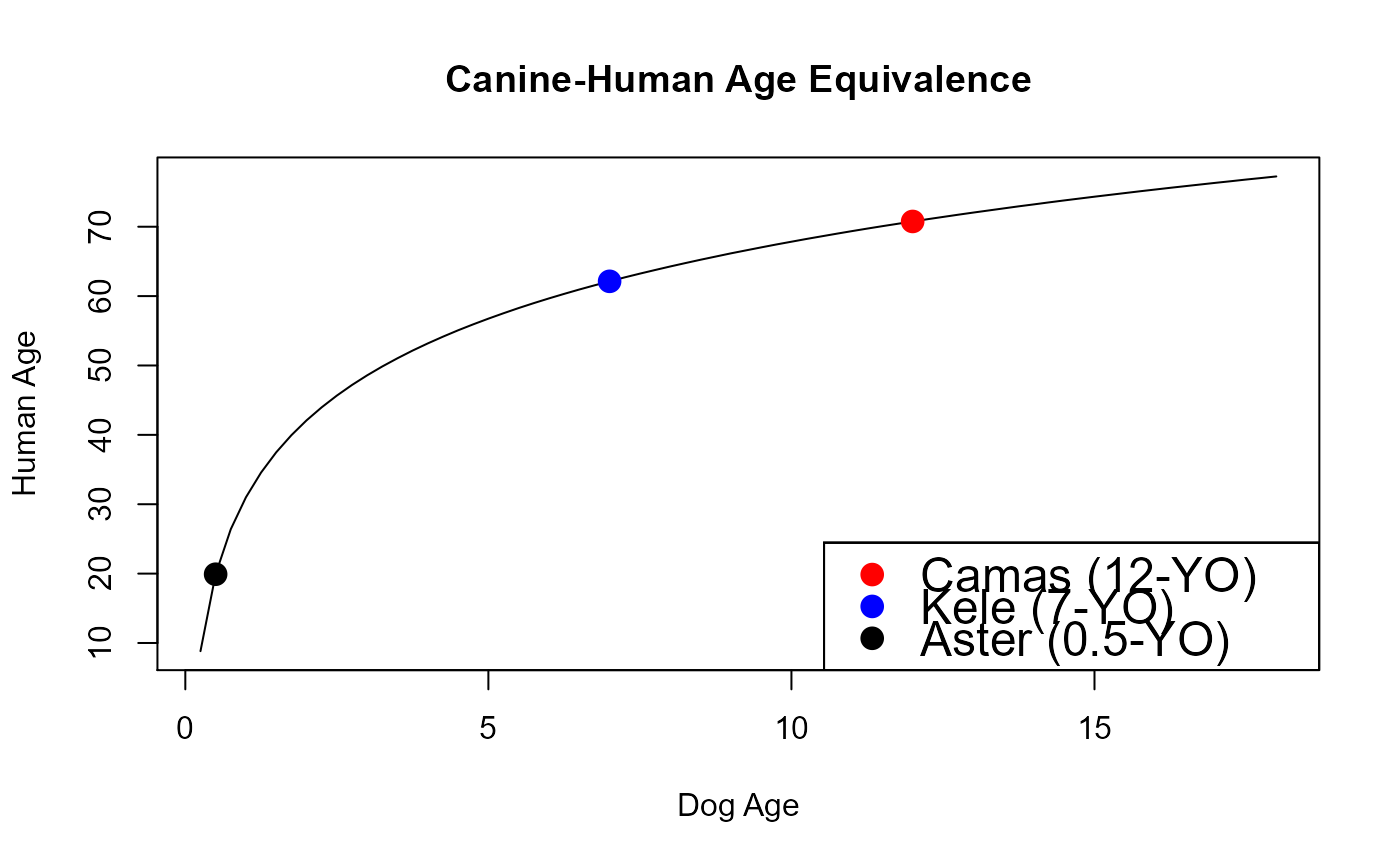Calculates canines equivalent human age (for fun)
chae(x)
Arguments
| x | numeric vector, dog age |
|---|
Value
numeric vector, equivalent human age
References
Wang, T., J. M, A.N. Hogan, S. Fong, K. Licon et al. (2020) quantitative translation of dog-to-human aging by conserved remodeling of epigenetic networks
Author
Jeffrey S. Evans <jeffrey_evans@tnc.org>
Examples
dat <- data.frame(DogAge = seq(0,18,0.25), HumanAge=chae(seq(0,18,0.25)))[-1,] plot(dat$DogAge, dat$HumanAge, "l", main="Canine-Human Age Equivalence", ylab="Human Age", xlab="Dog Age")legend("bottomright", legend=c("Camas (12-YO)", "Kele (7-YO)", "Aster (0.5-YO)"), pch=c(19,19,19), cex=c(1.5,1.5,1.5), col=c("red","blue","black"))
